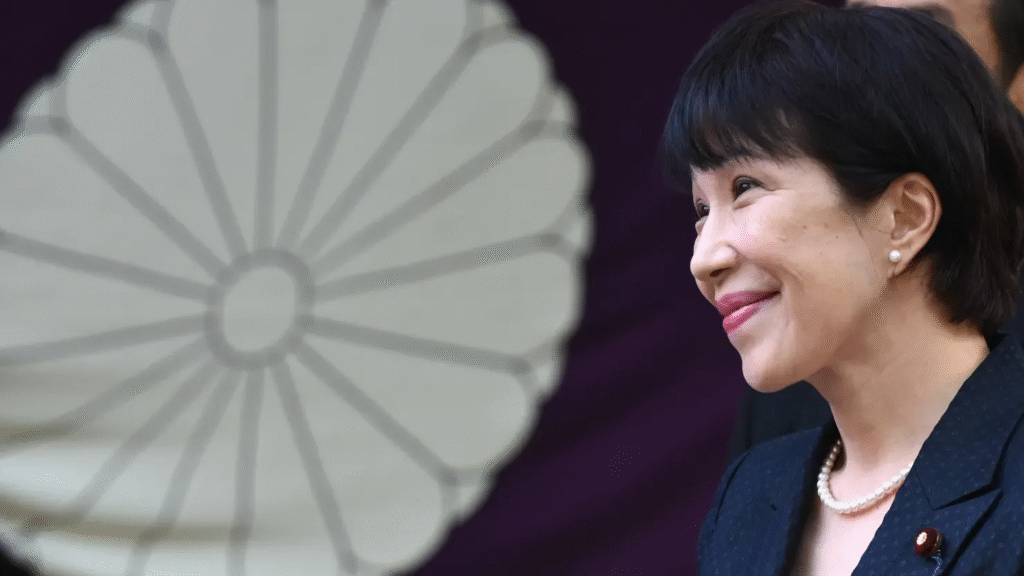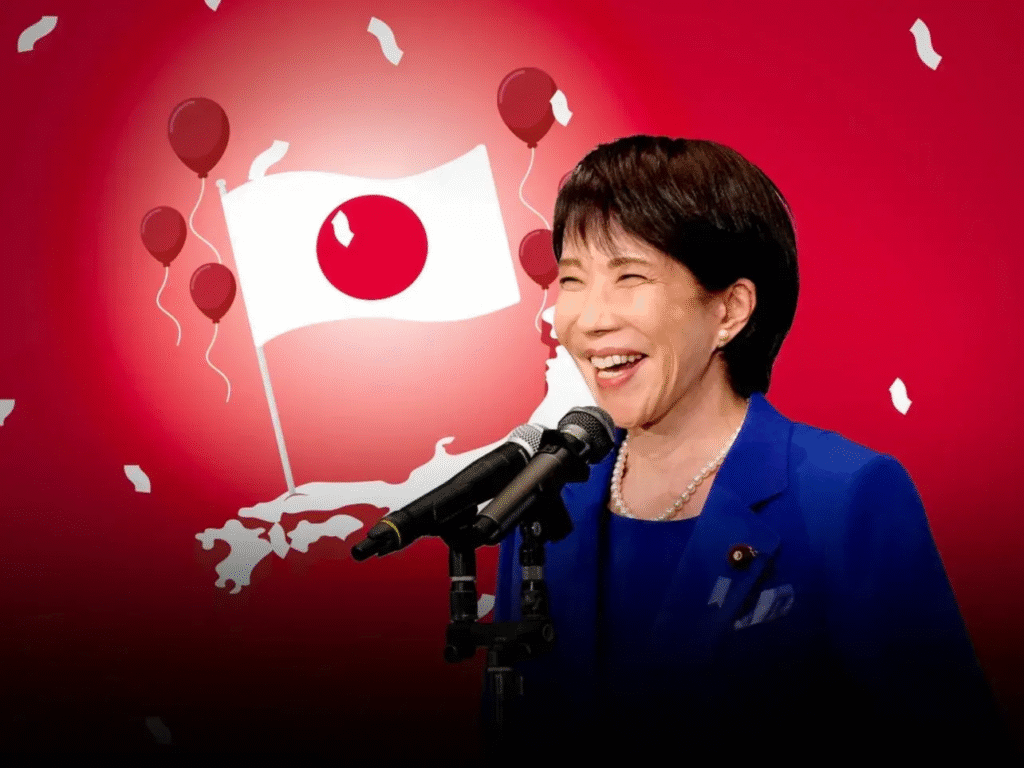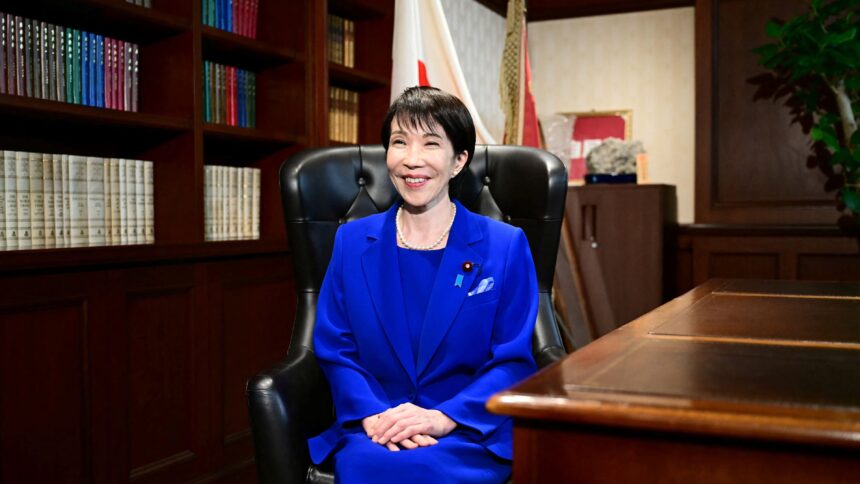Japan has long been regarded as famously conservative nation, and not without cause. Since 1955, the right-of-center Liberal Democratic Party (LDP) has been the ruling party in Japan with only two brief interruptions.
On Saturday, however, it made a break with tradition in electing its first woman leader, and therefore the first woman to become the Prime Minister of Japan: Sanae Takaichi. Who is Takaichi? Why was she elected? Most importantly, what does this mean for LGBTQ+ rights in Japan?
@cnn Sanae Takaichi has been elected to lead Japan’s ruling Liberal Democratic Party, making history as its first female leader. The 64-year-old is on track to become the country’s first female prime minister. CNN’s Hanako Montgomery reports from Tokyo outside the LDP’s headquarters, explaining who Takaichi is and what this means for Japan. #CNN #News #Japan ♬ original sound – CNN
Who is Sanae Takaichi?

Born and raised in Nara prefecture, Takaichi attended Kobe University, graduating with a degree in Business Studies. She worked in television before entering politics, though she spend time abroad in the US working for Pat Schroeder, a Democratic representative from Colorado, so her ambitions were apparent even in her early career.
She was first elected to the House of Representatives in the Diet as an independent in 1993, joining the LDP three years later. She became known for being on the right of the party, and is a member of the Ultra-Nationalist Nippon Kaigi organization, whose goals include revising the constitution to amend Article 9, which forbids Japan to have a standing military.
In Shinzo Abe’s second administration, she was known as a close follower of the late Prime Minister, and became the minister for internal affairs and communications. She was somewhat controversial in this role, making threats against television networks — including the national broadcaster, NHK — to revoke their broadcast licenses if they did not promote the government’s agenda.
She ran to be the head of the party twice before, in 2021 and 2024, but was finally successful on her third attempt. But why was there an election for the head of the party in under a year?
Why Did the Election Take Place?

In 2024, Shigeru Ishiba won the LDP’s leadership election, and so became the Prime Minister. Broadly seen as a moderate in the party, he is pro-marriage equality, and has been working to cool fraught relations with South Korea.
However, since his ascension to the role of Prime Minister, Ishiba presided over two significant electoral defeats. After becoming Prime Minister, he called a snap election in order to legitimize his premiership, but the LDP suffered major losses. Despite a coalition with Komeito, Ishiba was now leading a minority government.
This year also saw elections for the House of Councillors, the upper house of the Diet. Here again, the LDP lost its majority, giving way to opposition parties — including, notably, the far-right Sanseito. After these back-to-back losses, the writing was on the wall, and despite swearing to remain in position, Ishiba soon announced his intentions to resign, sparking the contest that would see Takaichi become the head of her party.
Why Did Takaichi Win?

As mentioned, Takaichi was very close to Abe during his time as leader, and has been seen by many as a successor of sorts to his leadership. Despite difficulties, Abe’s premiership has been increasingly looked upon fondly. This is in part due to his longevity as leader: as Prime Minister for nearly eight years, he was the longest-serving leader in Japan’s modern history. This stability was a welcome change to re “revolving door” of Prime Ministers that has plagued Japan for decades.
As mentioned, she is firmly seen as being to the right of the LDP, as opposed to her moderate opponents, including party rising star Shinjiro Koizumi. With the rise of Sanseito (and, to a lesser extent, the Conservative Party of Japan), it could be the case that party members and elected officials believed that a figure from the right would be best position to recover votes from these newer far-right establishments.
It is also not a bad thing for the LDP to introduce Japan’s first woman Prime Minister, from an optics perspective. By breaking with millennia of tradition, whilst also electing a leader who is on the party’s right, the LDP can claim, with some legitimacy, to be both novel and conservative.
What Does This Mean for LGBTQ+ Rights?

Takaichi is, however, not known for being especially friendly to LGBTQ+ people. While she has not been actively hostile to queer people, she is known for opposing marriage equality, and was the only member of the cabinet in 2023 to oppose a bill promoting understanding of LGBTQ+ people in Japan and opposing their discrimination, citing “discrimination” as vague.
She has also described allowing marriage equality as being “very difficult” under the constitution, as Article 24 defines marriage as being “between the sexes.” However, many legal experts — and five high court rulings — have concluded that this interpretation is unconstitutional, and so a mere act of parliament recognizing marriage quality is all it would take.
For LGBTQ+ people in Japan, this is a great step backwards. Ishiba, though conservative and reluctant to commit to legislative action, at least acknowledged that marriage equality would be good for Japan, and make the people who live here happier. Takaichi has shown no such understanding, and is also opposed to allowing women to keep their maiden name after marriage.
While she is unlikely to make any majorly overt moves to limit the rights of LGBTQ+ people, the prospect of progress — which had been gathering speed following high court rulings and the almost uniform opinion that marriage equality is a necessity — seems remote. At the time of writing, the LDP’s coalition partner Komeito, which is pro-LGBTQ+ marriage, is mulling dissolving their alliance if Takaichi does not moderate her views.
Despite being alternately described as “Japan’s Donald Trump” and “Japan’s Liz Truss,” it is unclear as yet what her approach to LGBTQ+ people will ultimately be, though signs from her past are far from good. We shall have to hope that she changes tack as Prime Minister.

